
Pietro Antonio Domenico Trapassi, better known by his pseudonym of Pietro Metastasio, was an Italian poet and librettist, considered the most important writer of opera seria libretti.

Egidio Romualdo Duni was an Italian composer who studied in Naples and worked in Italy, France and London, writing both Italian and French operas.
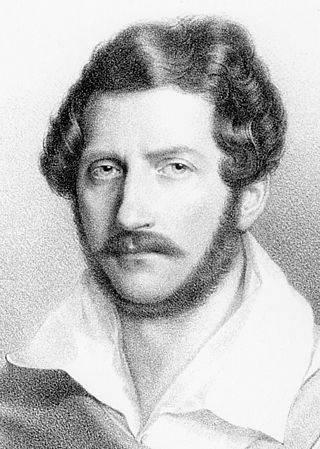
Le convenienze ed inconvenienze teatrali, also known as Viva la mamma and Viva la Diva, is a dramma giocoso, or opera, in two acts by Gaetano Donizetti. The Italian libretto was written by Domenico Gilardoni, adapted from Antonio Simeone Sografi's plays Le convenienze teatrali (1794) and Le inconvenienze teatrali (1800).

Artaserse is the name of a number of Italian operas, all based on a text by Metastasio. Artaserse is the Italian form of the name of the king Artaxerxes I of Persia.

Romulus was the legendary founder and first king of Rome. Various traditions attribute the establishment of many of Rome's oldest legal, political, religious, and social institutions to Romulus and his contemporaries. Although many of these traditions incorporate elements of folklore, and it is not clear to what extent a historical figure underlies the God-like Romulus, the events and institutions ascribed to him were central to the myths surrounding Rome's origins and cultural traditions.
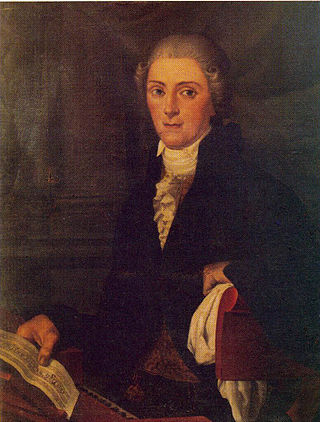
Gaspare Pacchierotti was a mezzo-soprano castrato, and one of the most famous singers of his time.
Domenico Fischietti (1725–1810) was an Italian composer.

Venanzio Rauzzini was an Italian castrato, composer, pianist, singing teacher and concert impresario. He is said to have first studied singing under a member of the Sistine Chapel Choir. He was a cantante soprano at the Socio Accademico of the Accademia di Santa Cecilia in Rome. He studied with Giuseppe Santarelli in Rome. Though unlikely, it has been suggested that Rauzzini may not in fact have been a castrato, but rather had an endocrine condition that prevented his voice from breaking, hence his many affairs as he was thought to be "safe". That said, scholars such as Paul Rice and Brianna Robertson-Kirkland refute this idea.
Rinaldo di (da) Capua was an Italian composer. Little is known of him with any certainty, including his name, although he was known to Charles Burney. He may have been the father of composer Marcello Bernardini.
Antonio Maria Mazzoni was an Italian composer.

Romolo ed Ersilia is an 18th-century Italian opera in 3 acts by the Czech composer Josef Mysliveček composed to a libretto by the Italian poet Metastasio first produced in Innsbruck in 1765 with music by Johann Adolf Hasse. The drama was one of Metastasio's last, shortest, and least popular. Mysliveček's setting of 1773 was the only other one known to have been produced during the remainder of the eighteenth century. It includes significant alterations, in particular the introduction of new arias that augment the importance of certain characters and the re-ordering of existing arias. The alterations are not attributable. This opera belong to the serious type in Italian language referred to as opera seria. In Mysliveček's day, the opening aria, "Questa è la bella face," the duet that concludes the first act, and the quartet that concludes the second act were famed for their brilliance.

Ezio is an eighteenth-century Italian opera in 3 acts by the Czech composer Josef Mysliveček. It was the composer's first setting of a libretto by the Italian poet Metastasio that was first performed with music by Pietro Auletta in 1728, one of the most popular of the Metastasian librettos in Mysliveček's day. The story is based on incidents from the lives of the 5th-century Roman emperor Valentinian III and his general Aetius. For a performance in the 1770s, it would only be expected that a libretto of such age would be abbreviated and altered to suit contemporary operatic taste. The cuts and changes in the text made for the 1775 performance of Mysliveček's opera are not attributable. All of Mysliveček's operas are of the serious type in Italian language referred to as opera seria.
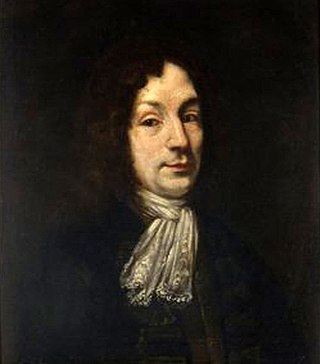
Luca Antonio Predieri was an Italian composer and violinist. A member of a prominent family of musicians, Predieri was born in Bologna and was active there from 1704. In 1737 he moved to Vienna, eventually becoming Kapellmeister to the imperial Habsburg court in 1741, a post he held for ten years. In 1765 he returned to his native city where he died two years later at the age of 78. A prolific opera composer, he was also known for his sacred music and oratorios. Although his operas were largely forgotten by the end of his own lifetime and most of their scores lost, individual arias as well some of his sacred music are still performed and recorded.
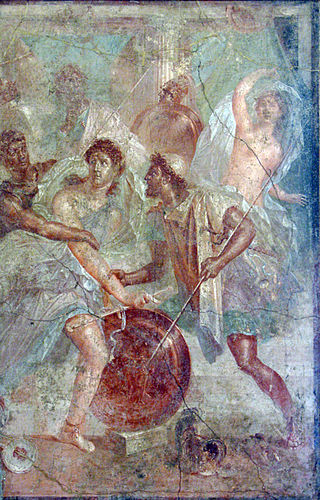
Achilles on Skyros is an episode in the myth of Achilles, a Greek hero of the Trojan War. Not existing in Homer's epic poem Iliad, the episode is written down in detail in some later versions of the story, particularly the Achilleid by the Roman poet Statius. The story of how Achilles disguised himself as a girl at the court of the king of Skyros, fell in love with one of the princesses, and married her before leaving for Troy, became a popular topic in arts and literature from Classical times until the middle of the 20th century. The carnivalesque disguises and gender transpositions at the heart of the story were particularly popular in opera, with over 30 different operas on the theme between 1641 and 1857.

Adriano in Siria is a libretto by Italian poet Metastasio first performed, with music by Antonio Caldara, in Vienna in 1732, and turned into an opera by at least 60 other composers during the next century. Metastasio based the background of the story on late Classical works by Cassius Dio and Elio Sparziano.
Antigono is a three act opera seria composed by Christoph Willibald Gluck. It premiered February 9, 1756, at the Teatro Argentina in Rome. The Italian libretto was written by Pietro Metastasio, who was considered to be the most important opera seria librettist. Antigono was the only opera that Gluck ever premiered in Rome. This allowed him to reuse several arias and an entire introduction from some of his other operas, L'innocenza giustificata, Le cinesi, and La danza.
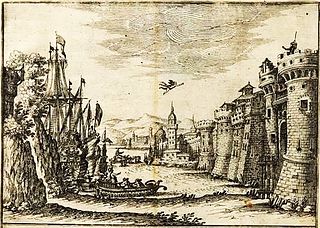
L'Argia is an opera in a prologue and three acts composed by Antonio Cesti to a libretto by Giovanni Filippo Apolloni. It was first performed in the court theatre at Innsbruck on 4 November 1655 to celebrate the visit of Queen Christina of Sweden who was on her way to exile in Rome. Over the next 20 years it had multiple performances in Italian cities including Venice and Siena where it inaugurated Siena's new opera house in 1669. Its first performance in modern times took place at the Innsbruck Festival of Early Music in 1996. Set on the Island of Cyprus in ancient times the opera's convoluted plot, full of disguises and mistaken identities, revolves around the amorous misadventures of Selino who has been pursued to Salamis by his deserted wife Princess Argia.

Artaserse is an opera in three acts composed by Johann Adolph Hasse to an Italian libretto adapted from that by Metastasio by Giovanni Boldini first shown in Venice on 11 February 1730. Artaserse received its modern day premiere by Ensemble Serse in London on 7 November 2009.

Solimano is an opera in three acts composed by Johann Adolph Hasse to an Italian-language libretto by Giovanni Ambrogio Migliavacca. Loosely based on an episode in the life of Suleiman the Magnificent, the opera premiered on 5 February 1753 at the Opernhaus am Zwinger in Dresden. The lavish premiere production was designed by Giuseppe Galli Bibiena and featured Angelo Amorevoli in the title role.

Giovanni Ambrogio Migliavacca was an Italian poet and librettist. A student and protégé of Metastasio, he was primarily active in the court theaters of Dresden and Vienna. His most successful work was the libretto for the opera Solimano, first set by Johann Adolph Hasse in 1753 and subsequently set by 18 other composers in the course of the next 50 years.













